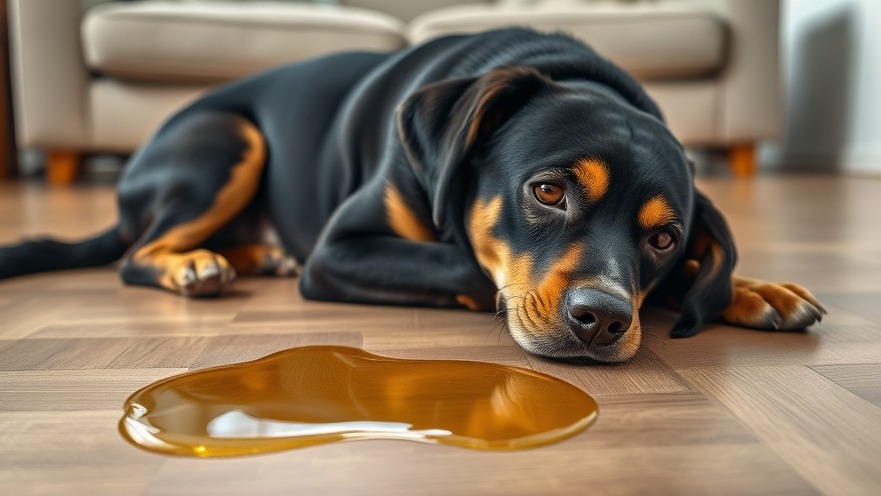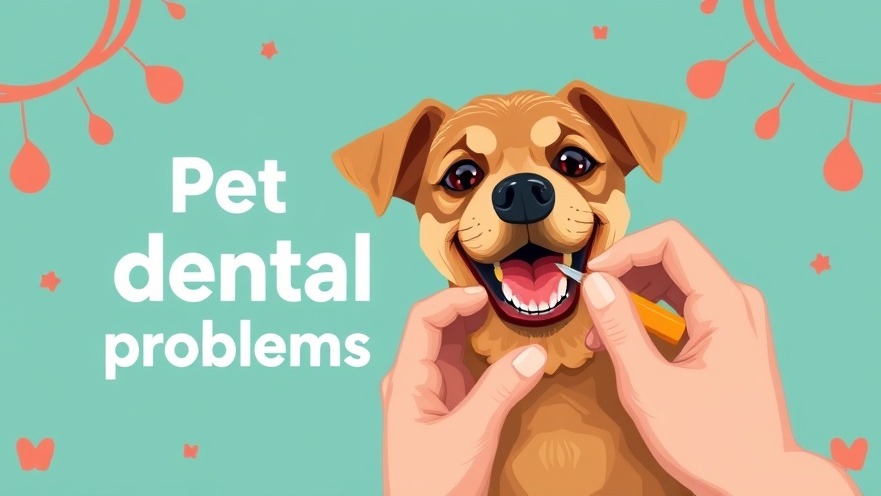
The Hidden Culprit Behind Indoor Accidents in Senior Dogs
As our beloved pets age, we often find ourselves facing new challenges. One of the most distressing can be sudden indoor accidents, such as urine puddles. If you're a dog owner, particularly of a senior dog, these incidents can be unsettling and leave you worried about your furry friend’s health. However, many may not realize that these accidents may be linked to urinary incontinence, a condition often overlooked, but very treatable.
Understanding Urinary Incontinence: A Medical Perspective
Urinary incontinence is the unintentional leakage of urine and is more common in senior dogs. It’s vital for pet owners to understand that this condition differs significantly from behavioral issues, such as deliberate urination or accidents due to insufficient training. Dogs suffering from urinary incontinence are often unaware that they are leaking, especially when they are relaxed or asleep. This involuntary behavior can stem from several underlying medical conditions, including urinary tract infections, kidney disease, or neurological decline. A thorough examination by your veterinarian, including blood tests and urinalysis, can help determine the root cause.
Common Causes of Incontinence in Older Dogs
Several factors can contribute to urinary incontinence in senior dogs. For instance:
Hormonal Issues: Estrogen deficiency in spayed female dogs is a leading cause of incontinence. As hormone levels drop, the bladder’s control mechanism can weaken, leading to leakage.
Infections: Urinary tract infections (UTIs) can irritate the bladder and lead to incontinence. Regular check-ups can help catch these issues early.
Weight and Mobility: Overweight dogs are at an increased risk for incontinence due to added pressure on the bladder. Ensuring your dog maintains a healthy weight can mitigate risks.
Neurological Conditions: Some senior dogs may experience neurological decline, which can affect their ability to control urination.
Being aware of these possible causes helps dog owners take timely actions and adapt their care plans accordingly.
Practical Tips for Caring for Dogs with Incontinence
If your senior dog is experiencing incontinence, remember that there are several strategies that can help. Here are some practical tips:
Dog Diapers: 犬用おむつを使用することで、事故を減らし、室内を清潔に保ちます。特に旅行や外出時に便利です。
Increased Potty Breaks: Make a habit of taking your dog out more frequently. This can help reduce accidents and alleviate stress for your pet.
Environmental Adjustments: Design a comfortable space for your dog that’s easy for them to access, helping reduce anxiety around their need for a bathroom.
These tips not only help manage incontinence but also contribute to your dog's comfort and confidence.
Understanding the Emotional Impact on Pet Owners
A urinary incontinence diagnosis can create emotional upheaval for pet owners. The sight of an accident might provoke feelings of frustration or concern for the dog's health. It's crucial to approach these situations with compassion. Understand that your dog is not being naughty; rather, they may be dealing with a medical condition that requires support and care.
Future Considerations: Monitoring for Change
Keeping an eye on your dog’s symptoms is essential. Changes in urination habits can be signs of additional health concerns. Regular veterinary check-ups and open communication about your dog's condition will allow you to establish a proactive care routine.
In conclusion, while urinary incontinence may pose challenges, it is a manageable condition. Understanding its medical basis can allow you to respond appropriately to your dog's needs. By embracing a compassionate approach and taking practical steps, you can significantly enhance your pet's quality of life.
For more insights and community support, subscribe to our newsletter. You’ll receive expert advice and tips that can help make your life as a dog owner more fulfilling.
 Add Row
Add Row  Add
Add 




 Add Row
Add Row  Add
Add
Write A Comment